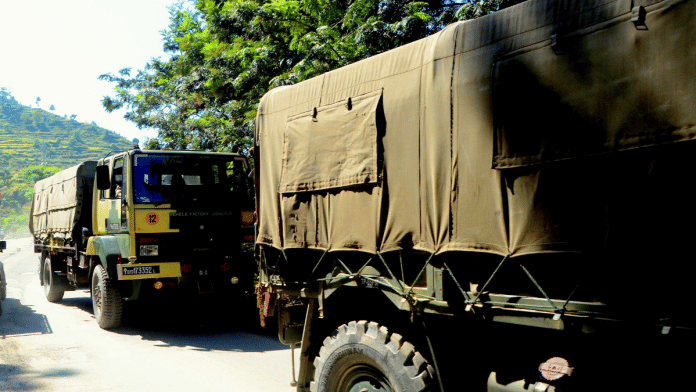New Delhi: Indian Army is considering technology infusion via the employment of heavy cargo drones in high altitude areas soon to ensure last-mile connectivity, sources in the establishment have said.
Pioneer Corps, the operational logistics arm of the Army, is also under optimisation, the sources confirmed. The process will take at least a decade for completion.
The Army has already optimised three units, which were with the Border Roads Organisation (BRO). The optimisation of Pioneer Corps is also likely to be extended to Territorial Army—reserve force comprising volunteers—sources said.
A source explained, “Last-mile connectivity in any battlefield is very crucial, whether we are on the battlefield or deployed on the borders. We would be able to construct roads and connect forward posts.”
The source added that as the Army builds infrastructure, it will be able to replace animal transport to some extent and that the process for this has already been underway. Owing to the nature of India’s terrain, the Army has employed all-terrain and rugged-terrain vehicles. In some cases, even mini-trucks ensure last-mile connectivity.
Moreover, the Army is carrying out research and development of robotic mules under the Army Service Corps (ASC), in partnership with the Indian Institute of Science (IISc).
According to sources, animal transport has served the purpose of ensuring connectivity well so far and the services of animals will continue alongside the improved infrastructure. But the requirement of animal transport will come down comparatively over the next decade.
The Army is also looking at faster construction for troops deployment in forward areas. It has introduced new technology, such as Light Gauge Steel Frame and 3D printing.
Moreover, 68 solar projects have been set up, including two at Siachen Base Camp.
Another step aimed at the enhancement of logistics operations is the introduction of Joint Logistics Nodes (JLN), which provide integrated logistics to the armed forces services with optimal resource utilisation. New locations are being identified for the establishment of the nodes in future. Cross staffing and training among the three services armed forces is essential for integration, and has already begun.
Logistics play an instrumental role for troops in forward areas, especially during winter, as access by road is cut off due to heavy snowfall. Indian and Chinese troops have been engaged in a standoff along the Line of Actual Control for four years now.
The Quarter Master General’s (QMG) branch of the Indian Army is the one responsible for supply of ration and habitat, infusion and absorption of technology, optimal utilisation of units, personnel, animals and equipment, and ensuring combat readiness.
In addition, it is also responsible for land owned by the Army. With respect to certain Army land controversies and encroachments coming to light, the source said, “Over the years, we have instituted robust measures to ensure that military land is not encroached upon. We are being fairly successful at that. We have a number of measures, including watch and ward staff as well as a detailed survey of our land through digital means .”
The government’s decision last year to transfer Army cantonment land to civil municipal authorities will not have any impact on the Army’s assets in the cantonment, sources said.
A source added that a gazette notification, seeking public suggestions and objections, had been issued by the Ministry of Defence on 5 March 2024 for ten cantonments—Ajmer, Babina, Clement Town, Deolali, Dehradun, Fatehgarh, Nasirabad, Mathura, Ramgarh and Shahjahanpur.
“The process of seeking suggestions and objections has begun, and deliberations are underway,” they said.
(Edited by Mannat Chugh)
Also Read: India’s quest for small arms continues, with some twists and turns and heartburn along the way






